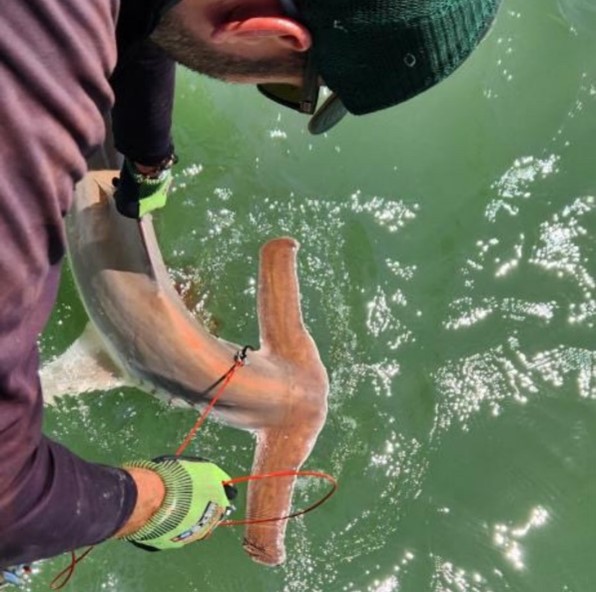Finding a hammer in a haystack
Hammerhead sharks, like the great hammerhead and scalloped hammerhead are critically endangered globally. In some areas their populations may have declined by up to 98%. Their susceptibility to fishing pressure, especially net capture and their low post-release survival rates make them very vulnerable to overexploitation. On top of that, we still know so little about their behaviour and biology. Isn’t it weird that hammerheads are such charismatic animals, where every child basically knows what a hammerhead is, and yet we have so much to learn about them? How can we protect them when we do not even know their basic habitat requirements? For example, the pupping grounds and nursery areas of great hammerheads remain largely a mystery.
So, to better manage hammerheads and understand what habitats to protect to help populations recover we need to urgently fill those knowledge gaps. However, the tragedy is obvious: With such reduced populations around the world, sample sizes for solid ecology studies remain often low. But where do we even start? Where should we look to find enough hammerheads to collect samples and learn more about their behaviour?
It seems like we may have found the answer. Throughout our work on sharks across Australia, our team has identified some key areas where we repeatedly catch great hammerheads, scalloped hammerheads and winghead sharks in high numbers. Winghead sharks, in particular, are of interest to us as they are even less well understood than the other two. We practically know nothing about them.

The first winghead shark we ever caught and tagged with a tracking device. This animal, amongst many others of its kind, will give us never before seen insights into their movements and habitat use. Photo © Lou Mason
Relatively efficient fisheries management in Australia, especially in Queensland may have contributed to this hotspot of hammerheads. Therefore, these key areas here in Australia may well be a lifeboat for hammerheads around the world. For this project, “Lifeboats for hammerheads: essential habitats for conservation”, we are setting out to sample and track as many of our target species, including juveniles, subadults and adults, to specifically identify key habitats that are critical for the survival of these species. Questions such as: “Do juvenile scalloped hammerheads prefer sandflats adjacent to mangroves, or will any sandflat do?”; “Do adult great hammerheads require access to intertidal areas to hunt stingrays?”; Or “which habitats do wingheads give birth in?” will be amongst many we are trying to answer.
Ultimately, we aim to then apply this to the global distribution of great hammerheads, scalloped hammerheads and wingheads to identify further areas that could be turned into lifeboats with proper management and protection. Our goal is to produce solid information and the behaviour and biology of these species with regards to critical habitats that can be used globally to help recover populations that are severely reduced.
